1.Identification
1.1 GHS Product identifier
| Product name | crotoxyphos |
|---|
1.2 Other means of identification
| Product number | - |
|---|---|
| Other names | 1-phenylethyl (2E)-3-[(dimethoxyphosphinyl)oxy]-2-butenoate |
1.3 Recommended use of the chemical and restrictions on use
| Identified uses | For industry use only. Insecticide |
|---|---|
| Uses advised against | no data available |
1.4 Supplier's details
| Company | MOLBASE (Shanghai) Biotechnology Co., Ltd. |
|---|---|
| Address | Floor 4 & 5, Building 12, No. 1001 North Qinzhou Road, Xuhui District, Shanghai, China |
| Telephone | +86(21)64956998 |
| Fax | +86(21)54365166 |
1.5 Emergency phone number
| Emergency phone number | +86-400-6021-666 |
|---|---|
| Service hours | Monday to Friday, 9am-5pm (Standard time zone: UTC/GMT +8 hours). |
2.Hazard identification
2.1 Classification of the substance or mixture
Acute toxicity - Oral, Category 3
Acute toxicity - Dermal, Category 3
Hazardous to the aquatic environment, short-term (Acute) - Category Acute 1
Hazardous to the aquatic environment, long-term (Chronic) - Category Chronic 1
2.2 GHS label elements, including precautionary statements
| Pictogram(s) | 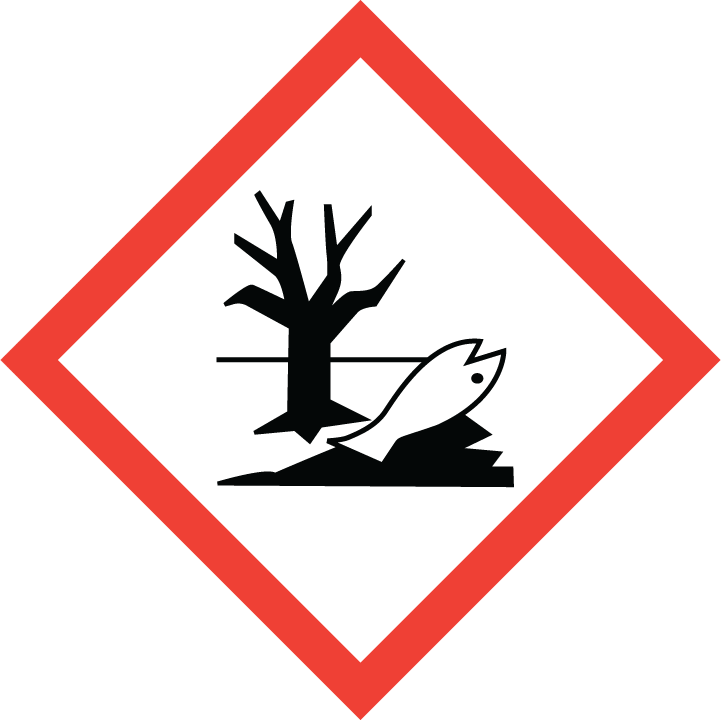 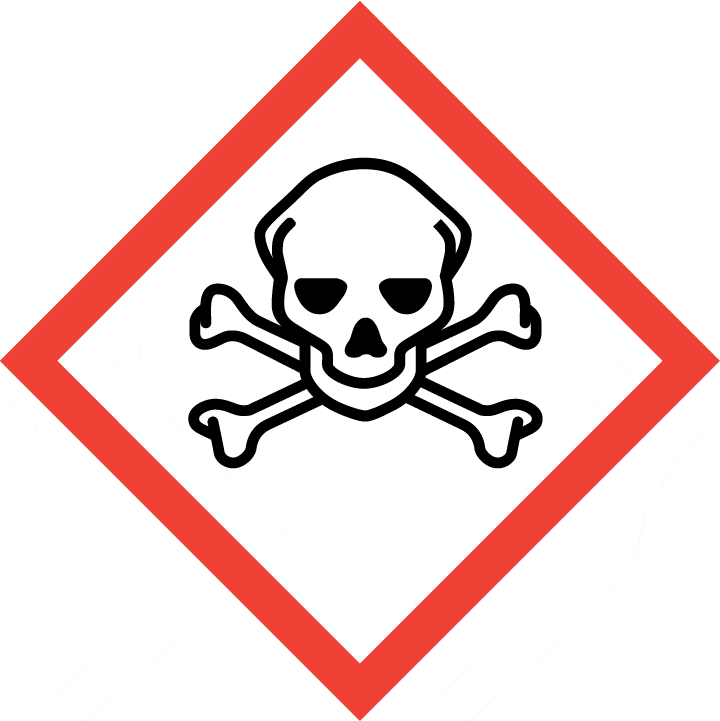 |
|---|---|
| Signal word | Danger |
| Hazard statement(s) | H301 Toxic if swallowed H311 Toxic in contact with skin H410 Very toxic to aquatic life with long lasting effects |
| Precautionary statement(s) | |
| Prevention | P264 Wash ... thoroughly after handling. P270 Do not eat, drink or smoke when using this product. P280 Wear protective gloves/protective clothing/eye protection/face protection. P273 Avoid release to the environment. |
| Response | P301+P310 IF SWALLOWED: Immediately call a POISON CENTER/doctor/… P321 Specific treatment (see ... on this label). P330 Rinse mouth. P302+P352 IF ON SKIN: Wash with plenty of water/... P312 Call a POISON CENTER/doctor/…if you feel unwell. P361+P364 Take off immediately all contaminated clothing and wash it before reuse. P391 Collect spillage. |
| Storage | P405 Store locked up. |
| Disposal | P501 Dispose of contents/container to ... |
2.3 Other hazards which do not result in classification
none
3.Composition/information on ingredients
3.1 Substances
| Chemical name | Common names and synonyms | CAS number | EC number | Concentration |
|---|---|---|---|---|
| crotoxyphos | crotoxyphos | 7700-17-6 | none | 100% |
4.First-aid measures
4.1 Description of necessary first-aid measures
General advice
Consult a physician. Show this safety data sheet to the doctor in attendance.
If inhaled
If breathed in, move person into fresh air. If not breathing, give artificial respiration. Consult a physician.
In case of skin contact
Wash off with soap and plenty of water. Consult a physician.
In case of eye contact
Rinse thoroughly with plenty of water for at least 15 minutes and consult a physician.
If swallowed
Never give anything by mouth to an unconscious person. Rinse mouth with water. Consult a physician.
4.2 Most important symptoms/effects, acute and delayed
no data available
4.3 Indication of immediate medical attention and special treatment needed, if necessary
Minimum/Potential Fatal Human Dose
5. 5= EXTREMELY TOXIC: PROBABLE ORAL LETHAL DOSE (HUMAN) 5-50 MG/KG, BETWEEN 7 DROPS & 1 TEASPOONFUL FOR 70 KG PERSON (150 LB). /BIDRIN/
Absorption, Distribution and Excretion
STUDIES WITH (32)P-LABELED CIODRIN...IN LACTATING EWES AND...GOATS SHOWED HYDROLYTIC FISSION TO...THE CORRESPONDING MONOMETHYLPHOSPHATE AND DIMETHYLPHOSPHATE. IN BOTH SPECIES, MAJOR ELIMINATIVE ROUTE WAS URINARY, AND VERY SMALL AMT OF UNCHANGED /CIODRIN/ IN MILK CONSISTED ONLY OF BETA-ISOMER.
5.Fire-fighting measures
5.1 Extinguishing media
Suitable extinguishing media
Use water spray, alcohol-resistant foam, dry chemical or carbon dioxide.
5.2 Specific hazards arising from the chemical
no data available
5.3 Special protective actions for fire-fighters
Wear self-contained breathing apparatus for firefighting if necessary.
6.Accidental release measures
6.1 Personal precautions, protective equipment and emergency procedures
Use personal protective equipment. Avoid dust formation. Avoid breathing vapours, mist or gas. Ensure adequate ventilation. Evacuate personnel to safe areas. Avoid breathing dust. For personal protection see section 8.
6.2 Environmental precautions
Prevent further leakage or spillage if safe to do so. Do not let product enter drains. Discharge into the environment must be avoided.
6.3 Methods and materials for containment and cleaning up
Pick up and arrange disposal. Sweep up and shovel. Keep in suitable, closed containers for disposal.
7.Handling and storage
7.1 Precautions for safe handling
Avoid contact with skin and eyes. Avoid formation of dust and aerosols. Avoid exposure - obtain special instructions before use.Provide appropriate exhaust ventilation at places where dust is formed. For precautions see section 2.2.
7.2 Conditions for safe storage, including any incompatibilities
Keep cool but avoid freezing EC.
8.Exposure controls/personal protection
8.1 Control parameters
Occupational Exposure limit values
no data available
Biological limit values
no data available
8.2 Appropriate engineering controls
Handle in accordance with good industrial hygiene and safety practice. Wash hands before breaks and at the end of workday.
8.3 Individual protection measures, such as personal protective equipment (PPE)
Eye/face protection
Safety glasses with side-shields conforming to EN166. Use equipment for eye protection tested and approved under appropriate government standards such as NIOSH (US) or EN 166(EU).
Skin protection
Wear impervious clothing. The type of protective equipment must be selected according to the concentration and amount of the dangerous substance at the specific workplace. Handle with gloves. Gloves must be inspected prior to use. Use proper glove removal technique(without touching glove's outer surface) to avoid skin contact with this product. Dispose of contaminated gloves after use in accordance with applicable laws and good laboratory practices. Wash and dry hands. The selected protective gloves have to satisfy the specifications of EU Directive 89/686/EEC and the standard EN 374 derived from it.
Respiratory protection
Wear dust mask when handling large quantities.
Thermal hazards
no data available
9.Physical and chemical properties
| Physical state | no data available |
|---|---|
| Colour | LIGHT STRAW-COLORED LIQ |
| Odour | Mild ester |
| Melting point/ freezing point | no data available |
| Boiling point or initial boiling point and boiling range | 365.6oC at 760 mmHg |
| Flammability | no data available |
| Lower and upper explosion limit / flammability limit | no data available |
| Flash point | 188.5oC |
| Auto-ignition temperature | no data available |
| Decomposition temperature | no data available |
| pH | no data available |
| Kinematic viscosity | no data available |
| Solubility | 0.1%; SLIGHTLY SOL IN KEROSENE, SATURATED HYDROCARBONS; SOL IN ACETONE, CHLOROFORM, ETHANOL, HIGHLY CHLORINATED HYDROCARBONS |
| Partition coefficient n-octanol/water (log value) | no data available |
| Vapour pressure | 1.4X10-5 mm Hg @ 20°C |
| Density and/or relative density | 1.198 g/cm3 |
| Relative vapour density | no data available |
| Particle characteristics | no data available |
10.Stability and reactivity
10.1 Reactivity
no data available
10.2 Chemical stability
IN AQ SOLN AT 38 DEG C, 50% IS HYDROLYZED IN 87 HR AT PH 1, 35 HR AT PH 9. ...WILL NOT ATTACK FIBERGLASS, REINFORCED POLYESTER, RIGID PVC, OR THE USUAL LACQUERS USED FOR LINING DRUMS.
10.3 Possibility of hazardous reactions
no data available
10.4 Conditions to avoid
no data available
10.5 Incompatible materials
no data available
10.6 Hazardous decomposition products
no data available
11.Toxicological information
Acute toxicity
- Oral: no data available
- Inhalation: no data available
- Dermal: no data available
Skin corrosion/irritation
no data available
Serious eye damage/irritation
no data available
Respiratory or skin sensitization
no data available
Germ cell mutagenicity
no data available
Carcinogenicity
no data available
Reproductive toxicity
no data available
STOT-single exposure
no data available
STOT-repeated exposure
no data available
Aspiration hazard
no data available
12.Ecological information
12.1 Toxicity
- Toxicity to fish: LC50 Pimephales promelas (fathead minnow) 11900 ug/L/96 hr @ 17°C (95% confidence limit 9830-14400 ug/L), wt 1.0 g. Static bioassay without aeration, pH 7.2-7.5, water hardness 40-50 mg/l as calcium carbonate and alkalinity of 30-35 mg/l. /Technical, 80%
- Toxicity to daphnia and other aquatic invertebrates: no data available
- Toxicity to algae: no data available
- Toxicity to microorganisms: no data available
12.2 Persistence and degradability
In experiments performed on the biodegradion of Ciodrin in three soil-water solutions, 14C-Ciodrin concentrations showed a very rapid initial decline resulting from adsorption and then continued to decline at a slower rate due to biodegradation(1). As degradation proceeded, degradation products were released into the solution and all the 14C was found in solution at the end of the experiment. In each soil system, Ciodrin degradation followed first-order kinetics and was related to the extent of initial adsorption. At pH 6.0, the degradation rate in the soil system is two orders of magnitude greater than in aqueous solution. The half-lives of Ciodrin in the soil-water systems are: Poygan silty clay loam (2.2% OC, pH 7.2), 2.00 hr (nonsterile) and 3.75 hr (sterile); Kewanunee Clay (5.8% OC, pH 6.4), 5.50 hr (nonsterile) and 6.00 hr (sterile); and Ella loamy sand (0.93% OC, pH 3.8), 71.0 hr (nonsterile) and 77.0 hr (sterile)(1). The decrease in rate in the electron-beam-sterilized soil was due to decreased Ciodrin adsorption due to the treatment, rather than from retardation of microbial degradation(1). The degradation involves an initial hydrolysis of the ester linkage leading to 3(methoxyphosphinyloxy)crotonic acid(1). The final products are dimethylphosphoric acid, cis-hydroxycrotonic acid, and 1-phenylethanol which are all water soluble(1). In laboratory studies in Chehalis clay loam, 87% of the applied ciodrin degraded in 1 day(2). The enzyme responsible for the degradation exhibits maximum activity at pH 8 and is heat labile(3).
12.3 Bioaccumulative potential
Using an estimated log Kow of 1.89(1), one would estimate a BCF of 16 for Ciodrin using a recommended regression equation(2). This would indicate that Ciodrin would not bioconcentrate in aquatic organisms(SRC).
12.4 Mobility in soil
The mean soil water distribution coefficient of Ciodrin in 3 soils, Poygan silty clay loam (2.2% OC, pH 7.2), Kewanunee Clay (5.8% OC, pH 6.4), and Ella loamy sand (0.93% OC, pH 3.8) was 6.09(1,2). The mean Koc value for these soils was 173(1). According to a suggested classification scheme(3), a Koc value of 173 suggests moderate mobility in soil(SRC).
12.5 Other adverse effects
no data available
13.Disposal considerations
13.1 Disposal methods
Product
The material can be disposed of by removal to a licensed chemical destruction plant or by controlled incineration with flue gas scrubbing. Do not contaminate water, foodstuffs, feed or seed by storage or disposal. Do not discharge to sewer systems.
Contaminated packaging
Containers can be triply rinsed (or equivalent) and offered for recycling or reconditioning. Alternatively, the packaging can be punctured to make it unusable for other purposes and then be disposed of in a sanitary landfill. Controlled incineration with flue gas scrubbing is possible for combustible packaging materials.
14.Transport information
14.1 UN Number
| ADR/RID: UN3018 | IMDG: UN3018 | IATA: UN3018 |
14.2 UN Proper Shipping Name
| ADR/RID: ORGANOPHOSPHORUS PESTICIDE, LIQUID, TOXIC |
| IMDG: ORGANOPHOSPHORUS PESTICIDE, LIQUID, TOXIC |
| IATA: ORGANOPHOSPHORUS PESTICIDE, LIQUID, TOXIC |
14.3 Transport hazard class(es)
| ADR/RID: 6.1(a) | IMDG: 6.1(a) | IATA: 6.1(a) |
14.4 Packing group, if applicable
| ADR/RID: II | IMDG: II | IATA: II |
14.5 Environmental hazards
| ADR/RID: yes | IMDG: yes | IATA: yes |
14.6 Special precautions for user
no data available
14.7 Transport in bulk according to Annex II of MARPOL 73/78 and the IBC Code
no data available
15.Regulatory information
15.1 Safety, health and environmental regulations specific for the product in question
| Chemical name | Common names and synonyms | CAS number | EC number |
|---|---|---|---|
| crotoxyphos | crotoxyphos | 7700-17-6 | none |
| European Inventory of Existing Commercial Chemical Substances (EINECS) | Listed. | ||
| EC Inventory | Listed. | ||
| United States Toxic Substances Control Act (TSCA) Inventory | Not Listed. | ||
| China Catalog of Hazardous chemicals 2015 | Listed. | ||
| New Zealand Inventory of Chemicals (NZIoC) | Not Listed. | ||
| Philippines Inventory of Chemicals and Chemical Substances (PICCS) | Not Listed. | ||
| Vietnam National Chemical Inventory | Not Listed. | ||
| Chinese Chemical Inventory of Existing Chemical Substances (China IECSC) | Not Listed. | ||
16.Other information
Information on revision
| Creation Date | Aug 17, 2017 |
|---|---|
| Revision Date | Aug 17, 2017 |
Abbreviations and acronyms
- CAS: Chemical Abstracts Service
- ADR: European Agreement concerning the International Carriage of Dangerous Goods by Road
- RID: Regulation concerning the International Carriage of Dangerous Goods by Rail
- IMDG: International Maritime Dangerous Goods
- IATA: International Air Transportation Association
- TWA: Time Weighted Average
- STEL: Short term exposure limit
- LC50: Lethal Concentration 50%
- LD50: Lethal Dose 50%
- EC50: Effective Concentration 50%
References
- IPCS - The International Chemical Safety Cards (ICSC), website: http://www.ilo.org/dyn/icsc/showcard.home
- HSDB - Hazardous Substances Data Bank, website: https://toxnet.nlm.nih.gov/newtoxnet/hsdb.htm
- IARC - International Agency for Research on Cancer, website: http://www.iarc.fr/
- eChemPortal - The Global Portal to Information on Chemical Substances by OECD, website: http://www.echemportal.org/echemportal/index?pageID=0&request_locale=en
- CAMEO Chemicals, website: http://cameochemicals.noaa.gov/search/simple
- ChemIDplus, website: http://chem.sis.nlm.nih.gov/chemidplus/chemidlite.jsp
- ERG - Emergency Response Guidebook by U.S. Department of Transportation, website: http://www.phmsa.dot.gov/hazmat/library/erg
- Germany GESTIS-database on hazard substance, website: http://www.dguv.de/ifa/gestis/gestis-stoffdatenbank/index-2.jsp
- ECHA - European Chemicals Agency, website: https://echa.europa.eu/
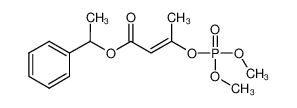






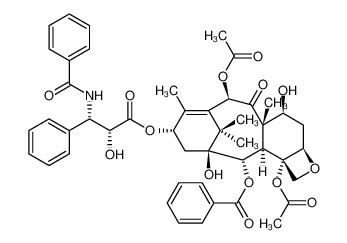

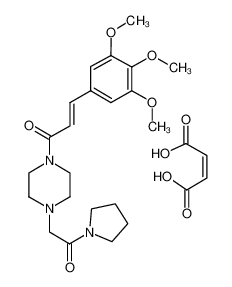
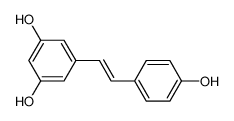

-
-

-
-
-

-
-
-

-
-
-

-
-
-

-
More Suppliers>>CHINA
Purity: 99.99%
Lead Time: 1 Day(s)
Price: Min $66 /kg
Hangzhou DayangChem Co., Ltd
CHINA
Purity: 98%
Lead Time: 7 Day(s)
Price: -
Henan Coreychem Co.,Ltd
CHINA
Purity: 98%
Lead Time: 3 Day(s)
Price: -
Chengdu SinoStandards Bio-Tech Co.,Ltd.
CHINA
Purity: 98%
Lead Time: 7 Day(s)
Price: -
Beijing Huaerbo Technology Co., Ltd.
CHINA
Purity: 95%
Lead Time: 0 Day(s)
Price: -